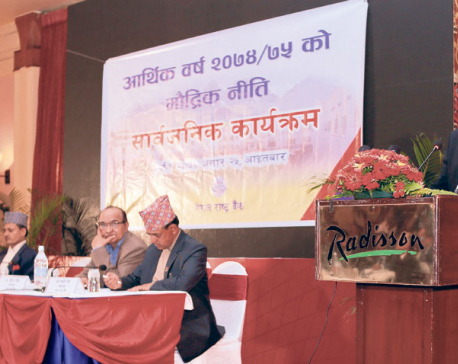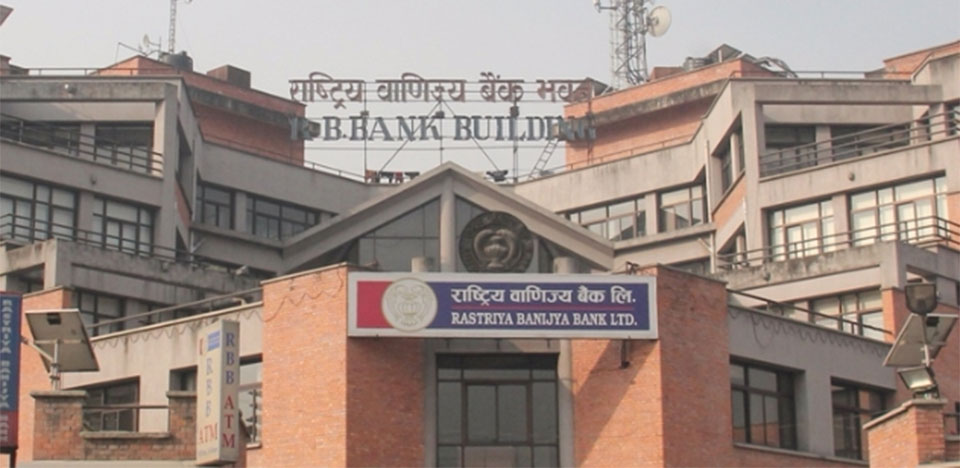
OR
Shortage of funds prompts bankers to ask NRB to scrap CCD ratio requirement
Published On: January 21, 2017 10:02 AM NPT By: Sagar Ghimire | @sagarghi
KATHMANDU, Jan 21: Bankers have urged Nepal Rastra Bank (NRB) to scrap the credit to core-capital-cum-deposit (CCD) ratio requirement that bank and financial institutions (BFIs) have to maintain.
Their proposal to the central bank to remove the rule all together comes in the wake of the CCD ratio requirement crippling their capacity to expand credit due to a low growth of deposit.
Deposit is a major source of funds for BFIs to finance loans.
The CCD requirement that the central bank enforces to maintain adequate liquidity in the system allows a bank to lend only up to 80 percent of its total deposits and core capital. It says that 20 percent should be held as cash reserves and government securities investment, among other liquid assets. For example, if a bank’s total deposits and core capital amounts to Rs 100, it can only lend up to Rs 80 and maintain Rs 6 as cash reserves and Rs 8 in government securities investment, among others.
Most commercial banks are thought to have reached the upper limits of the CCD ratio and are finding it difficult to make further investment. For banks to lend more, they have to either increase deposits and capital, or there should be upward revision of the CCD ratio, according to experts.
Nepal Bankers Association (NBA) -- the umbrella organization for commercial banks -- has officially requested NRB to scrap the CCD ratio requirement.
“We have requested NRB to scrap this requirement as there is another indicator that governs the liquidity ratio that banks should maintain,” said Bhuvan Dahal, an executive member of the NBA, referring to the 20 percent net liquid assets to total deposit ratio requirement. “If BFIs do not have to maintain this CCD ratio, their lending capacity will increase by some extent,” Dahal said.
Dahal estimates that the removal of the CCD ratio will increase lending in the current scenario by two to three percentage points. “Since we have to maintain 20 percent of our liquid assets out of the total deposits, the CCD ratio is not so important. This will help free up some funds which we can lend in this tight liquidity situation,” he added.
An NRB official also confirmed that the central bank has received a formal request from NBA asking it to reconsider the CCD ratio.
“Banks have been saying that they have been finding it hard to increase their loans due to a tight CCD ratio. Either they have to increase deposits or slow lending in this scenario or the CCD ratio should be lowered for them to increase their investment,” Narayan Prasad Paudel, an executive director at NRB, said.
“NBA has sent a letter requesting the central bank to scrap this requirement. We will look into this issue and its repercussions, and respond accordingly,” he said.
NRB had issued a repo and outright sale auction, but this had drawn lukewarm response from BFIs who reasoned that it couldn’t ease their problem of a tight CCD ratio. The depletion in the stock of BFIs deposits due to withdrawal of tax-filing last week has further compounded their CCD ratio problem which was already tight due to low deposit growth.
One of the major reasons for the slowdown in deposit growth is a huge treasury surplus due to poor capital expenditure. Capital expenditure pumps money into the banking system as the money gets spent.
You May Like This

NBA for scrapping CCD ratio requirement to ease ‘credit crunch’
KATHMANDU, June 19: Bankers have demanded the removal of credit to core capital and deposit (CCD) ratio, stating that the prudential... Read More...

NRB raises productive sector lending requirement to 25%
KATHMANDU, July 10: Nepal Rastra Bank (NRB) has raised the lending requirement for commercial banks toward productive sectors by 5 percentage... Read More...

Monetary Policy: NRB tightens flow of funds to stock market
KATHMANDU, July 14 In a bid to tighten the flow of finance from the banking sector to the stock market,... Read More...





Just In
- Teachers’ union challenges Education Minister Shrestha's policy on political affiliation
- Nepal sets target of 120 runs for UAE in ACC Premier Cup
- Discussion on resolution proposed by CPN-UML and Maoist Center begins in Koshi Provincial Assembly
- RBB invites applications for CEO, applications to be submitted within 21 days
- Telephone service restored in Bhotkhola after a week
- Chemical fertilizers imported from China being transported to Kathmandu
- Man dies in motorcycle accident in Dhanusha
- Nepal face early setback as four wickets fall in powerplay against UAE













Leave A Comment